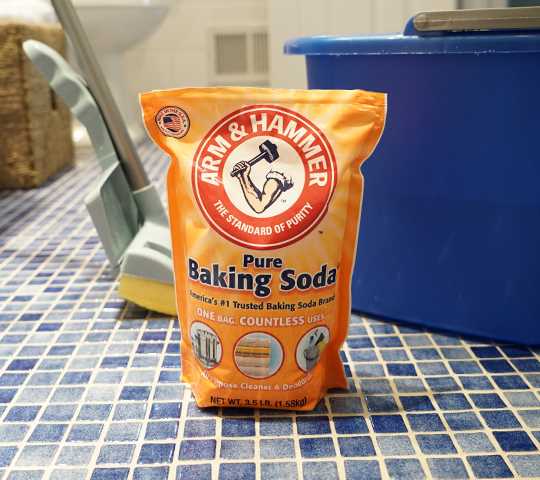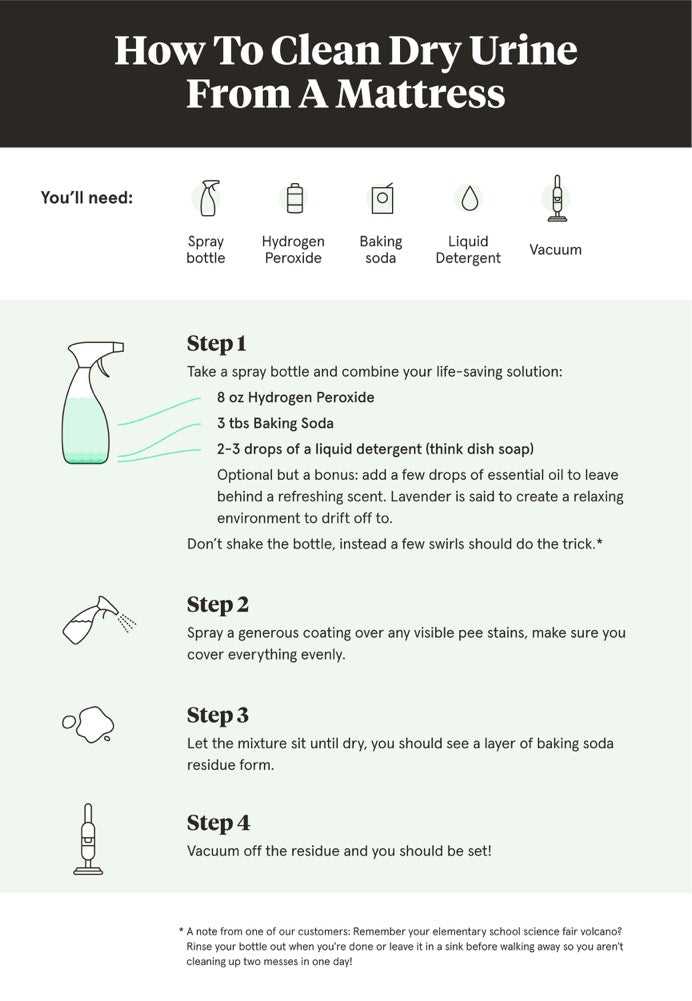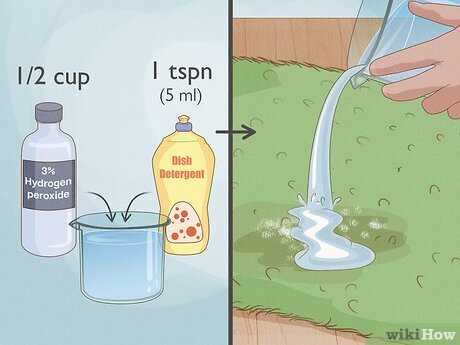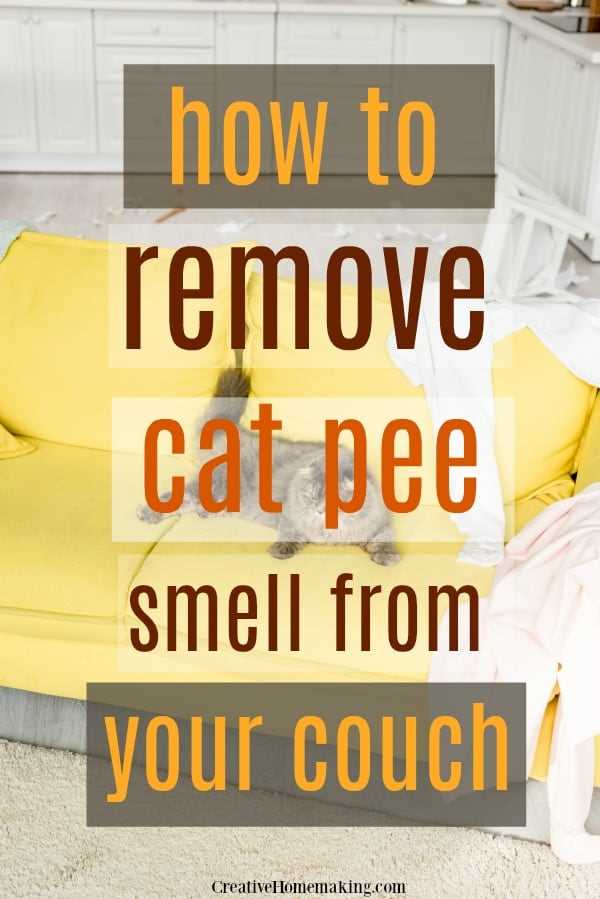



Start by mixing equal parts of white vinegar and water in a spray bottle. This solution effectively neutralizes unpleasant aromas. Spray the affected areas generously, allowing the mixture to sit for about 10-15 minutes before blotting with a clean cloth.
For stubborn stains, consider using an enzymatic cleaner specifically designed to break down organic compounds. Apply the cleaner as directed and ensure it penetrates the surface. This approach targets the source of the issue, rather than merely masking it.
After cleaning, sprinkle baking soda over the treated areas. Let it sit for several hours or overnight to absorb lingering odors. Vacuum the baking soda thoroughly to complete the process. This method not only helps eliminate unwanted scents but also leaves your environment feeling fresher.
Identifying the Source of the Odor
First, check areas where I frequently hang out–those spots are often the culprits. Look under furniture, in corners, and around litter boxes. If there’s a stain, it’s a strong indicator of where the odor is coming from.
Steps to Locate the Problem
- Use a blacklight in dim lighting. It reveals dried spots that are invisible to the naked eye.
- Pay attention to the texture of surfaces. If a spot feels sticky or damp, it’s likely a source.
- Sniff around various areas. Trust your nose; it knows the locations that need attention.
Preventing Future Incidents

Consider adding a heat pad for cats to cozy spots. This can encourage me to choose warmer, more comfortable areas over undesirable ones.
Regularly clean and inspect all areas where I spend time. Keeping my environment tidy helps prevent lingering odors.
Choosing the Right Cleaning Products
For tackling unwanted odors, enzymatic cleaners are my top recommendation. These products break down organic material, making them perfect for eliminating lingering scents from urine. Look for brands that specifically state they are designed for pet stains.
Natural Alternatives
Vinegar and baking soda provide a safe, non-toxic approach. Mixing equal parts of vinegar and water can help neutralize odors. After applying, sprinkle baking soda on the area for added absorption. Leave it for a few hours before vacuuming to maximize effectiveness.
Commercial Solutions
When selecting store-bought options, check for labels that mention “odor neutralizer” or “stain remover.” Avoid products with harsh chemicals, as they may not only mask the problem but can also be harmful to furry friends. Always conduct a patch test on fabrics to ensure safety.
Step-by-Step Cleaning Process for Carpets

First, blot the affected area with paper towels to absorb as much liquid as possible. Do not rub, as this can push the liquid deeper into the fibers.
Next, mix a solution of white vinegar and water in equal parts. Apply this solution to the stained area using a spray bottle. Allow it to sit for about 10 minutes to break down the residue.
After that, blot the area again with clean towels to remove the vinegar solution and any remaining liquid. Repeat until no more liquid is being absorbed.
Sprinkle baking soda generously over the area to neutralize odors. Leave it on for several hours, or overnight if possible, to absorb lingering scents.
Finally, vacuum the area thoroughly to remove the baking soda. If necessary, repeat the process for stubborn spots.
Additional Tips
For persistent odors, consider using an enzymatic cleaner specifically designed for organic stains. Follow the manufacturer’s instructions for optimal results.
Always test any cleaning solution on a small, inconspicuous area of the carpet before applying it to the stain to avoid any damage or discoloration.
Treating Hard Surfaces and Upholstery
For hard surfaces like tile, hardwood, or laminate, start by mixing equal parts of water and white vinegar in a spray bottle. Spray the mixture on the affected area and wipe it off with a clean cloth. This method neutralizes odors effectively.
For upholstery, first, check the manufacturer’s care instructions. If safe, sprinkle baking soda directly on the stained area. Let it sit for at least 15 minutes before vacuuming it up. This helps absorb unwanted odors.
Using Enzymatic Cleaners

Enzymatic cleaners are ideal for both hard surfaces and fabrics. They break down organic materials, eliminating lingering odors. Apply the cleaner according to the product instructions, ensuring it penetrates the fabric or surface. Allow sufficient time for it to work, then blot with a clean cloth.
Rinsing and Drying

After cleaning, rinse the area with clean water to remove any residue. For upholstery, use a wet cloth to dab the area, and for hard surfaces, mop it up. Ensure everything dries completely, as moisture can lead to further odors.
Preventing Future Accidents with Training
Establishing a consistent routine for litter box usage is crucial. As a feline, I thrive on predictability. Make sure the litter box is accessible and clean. I prefer a box that’s scooped daily and changed regularly. This encourages me to use it rather than find alternative spots to relieve myself.
Positive reinforcement works wonders. Whenever I use the litter box correctly, my human rewards me with treats or affection. This builds a connection between the desired behavior and positive outcomes. Setting a schedule for feeding can also help regulate my bathroom habits. I often follow my digestive routine closely after meals.
Consider providing multiple litter boxes in different areas of the house. This ensures I have options, especially if one is dirty or inconveniently located. The general rule is one box per cat, plus one extra.
Monitor my behavior for signs of discomfort or stress. Sometimes, changes in the environment, like new furniture or visitors, can make me anxious. Addressing my stress with a calm atmosphere or engaging playtime can keep me comfortable.
Lastly, educating yourself about my needs and preferences goes a long way. Research and resources are available to help improve the bond between humans and felines. A thorough understanding of my behavior can help prevent future mishaps. For instance, learn about whether do air scrubbers work for covid 19 to maintain a clean environment.
| Tip | Description |
|---|---|
| Routine | Consistent schedule for litter box cleaning and feeding. |
| Positive Reinforcement | Rewarding desired behaviors with treats or affection. |
| Multiple Boxes | Providing more than one litter box in various locations. |
| Behavior Monitoring | Watching for signs of stress or discomfort. |
| Education | Learning about feline needs and preferences. |
Long-Term Odor Neutralization Techniques
Applying an enzymatic cleaner regularly makes a significant difference. These products break down organic matter, eliminating lingering scents effectively.
Consider using a mixture of baking soda and vinegar. Sprinkle baking soda on surfaces, then spray diluted vinegar. This combination neutralizes odors without harsh chemicals.
Install air purifiers in key areas. HEPA filters help capture particles and reduce unpleasant odors over time. Regularly replace filters to maintain efficiency.
Activated charcoal is another powerful tool. Place bowls of it in areas where odors persist. It absorbs and keeps spaces fresh for extended periods.
Routine deep cleaning of carpets and upholstery should be scheduled monthly. This keeps residues from building up, ensuring a consistently clean environment.
Utilizing essential oils like lavender or tea tree can mask and neutralize odors. Mix a few drops with water in a spray bottle and mist areas as needed.
Regularly wash pet bedding and toys, ensuring that any lingering scents do not return. This simple step contributes to an overall fresher atmosphere.
Lastly, maintain proper ventilation in living spaces. Opening windows when possible allows fresh air to circulate, further diminishing any unwanted scents.









